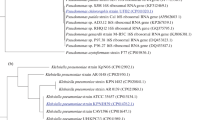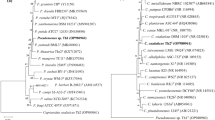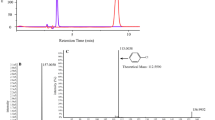Abstract
Three indigenous pseudomonads, Pseudomonas putida DLL-E4, Pseudomonas reactans and Pseudomonas fluorescens, were isolated from chlorophenol-contaminated soil samples collected from a sawmill located in Durban (South Africa). The obtained isolates were tested for their ability to degrade chlorophenolic compounds: 2,4-dichlorophenoxyacetic acid (2,4-D), 2,4-dichlorophenol (2,4-DCP) and 2,4,6-trichlorophenol (2,4,6-TCP) in batch cultures. The isolates were found to effectively degrade up to 99.5, 98.4 and 94.0% with a degradation rate in the range of 0.67–0.99 (2,4-D), 0.57–0.93 (2,4-DCP) and 0.30–0.39 (2,4,6-TCP) mgL–1 day–1 for 2,4-D; 2,4-DCP and 2,4,6-TCP, respectively. The degradation kinetics model revealed that these organisms could tolerate up to 600 mg/L of 2,4-DCP. Catechol 2,3-dioxygenase activity detected in the crude cell lysates of P. putida DLL-E4 and P. reactans was 21.9- and 37.6-fold higher than catechol 1,2-dioxygenase activity assayed, suggesting a meta-pathway for chlorophenol degradation by these organisms. This is also supported by the generally high expression of C23O gene (involved in meta-pathway) relative to tfdC gene (involved in ortho-pathway) expression. Results of this study will be helpful in the exploitation of these organisms and/or their enzymes in bioremediation strategies for chlorophenol-polluted environment.
Similar content being viewed by others
References
Olaniran, A.O. and Igbinosa, E.O., Chemosphere, 2011, vol. 83, no. 10, pp.1297–1306.
Michalowicz, J. and Duda, W., Pol. J. Environ. Stud., 2007, vol. 16, no. 3, pp. 347–362.
Igbinosa, E.O., Odjadjare, E.E., Chigor, V.N., Igbinosa, I.H., Emoghene, A.O., Ekhaise, et al., Sci. World J., 2013, vol. 2013, no. 1, pp. 1–11.
Potgieter, J.H., Bada, S.O., and Potgieter-Vermaak, S.S., Water S. A. (Online), 2009, vol. 35, no. 1, pp. 2–5.
Gutierrez, M.E., Gonzalez, M.H., Martinez-Hernandez, S., Texier, A.C., Cuervo-Lopez, F.M., and Gomez, J., Environ. Technol., 2012, vol. 33, no. 12, pp. 1375–1382.
Kumar, A., Trefault, N., and Olaniran, A.O., Crit. Rev. Microbiol., 2016, vol. 42, no. 2, pp. 194–208.
Lillis, L., Clipson, N., and Doyle, E., FEMS Microbiol. Ecol., 2010, vol. 73, no. 2, pp. 363–369.
Nicolaisen, M.H., Baelum, J., Jacobsen, C.S., and Sorensen, J., Environ. Microbiol., 2008, vol.10, no. 1, pp. 571–579.
Fukumori, F. and Hausinger, R.P., J. Biol. Chem., 1993, vol. 268, no. 1, pp. 24311–24317.
Balajee, S. and Mahadevan, A., Xenobiotics, 1999, vol. 20, no. 6, pp. 607–617.
Nakai, C., Horiike, K., Kuramitsu, S., Kagamiyama, H., and Nozaki, M., J. Biol. Chem., 1990, vol. 265, no. 2, pp. 660–665.
Nakai, C., Nakazawa, T., and Nozaki, M., Arch. Biochem. Biophys., 1988, vol. 267, no. 2, pp. 701–713.
Kukor, J.J. and Olsen, R.H., J. Bacteriol., 1991, vol. 173, no. 15, pp. 4587–4594.
Kaschabek, S.R., Kasberg, T., Muller, D., Mars, A.E., Janssen, D.B., and Reineke, W., J. Bacteriol., 1998, vol. 180, no. 2, pp. 296–302.
Mars, A.E., Kingma, J., Kaschabek, S.R., Reineke, W., and Janssen, D.B., J. Bacteriol., 1999, vol. 181, no. 4, pp.1309–1318.
Wieser, M., Eberspacher, J., Vogler, B., and Lingens, F., FEMS Microbiol. Lett., 1994, vol. 116, no. 1, pp. 73–78.
Shinji, T., Ryosuke, N., Ayumi, M., and Ken-ichi, Y., BioMed Central: The Open Access, 2013, vol. 13, no. 62, pp. 1–10.
Olaniran, A.O., Pillay, D., and Pillay, B., J. Environ. Sci., 2004, vol. 16, no. 6, pp. 968–972.
Olaniran, A.O., Naidoo, S., Masango, M.G., and Pillay, B., Biotechnol. Bioprocess. Eng., 2007, vol. 12, no. 3, pp. 276–281.
Movahedyan, H., Khorsandi, H., Salehi, R., and Nikaeen, M., Iran J. Environ. Health Sci. Eng., 2009. vol. 6, no. 1, pp.115–120.
McFarland, J., J. Am.Med. Assoc., 1907, vol. XLIX, no. 14, pp. 1176.
Al-Thani, R.F., Abd-El-Haleem, A.M., and Al-Shammri, M., African J. Biotechnol., 2007 vol. 6, no. 23, pp. 2675–2681.
Wu, J. and Nofziger, D.L., J. Environ. Quality, 1999, vol. 28, no. 1, pp. 92–100.
Kargi, F. and Eker, S., Inter. Biodeter. Biodegrad., 2005, vol. 55, no. 1, pp. 25–28.
Mahiudddin, M.D., Fakhruddin, A.N.M., and Abdullah-Al-Mahin, A., Int. School. Res. Net. Microbiol., 2011, vol. 201, no. 1, pp. 1–6.
Sei, K., Asano, K.I., Tateishi, N., Mori, K., Ike, M., and Fujita, M., J. Biosci. Bioeng., 1999, vol. 88, no. 5, pp. 542–550.
El-Fantroussi, S. and Agathos, S.N., Curr. Opin. Microbiol., 2005, vol. 8, no. 3, pp.1–8.
Xing-ping, Liu, Water Sci. Eng., 2009, vol. 2, no. 3, pp. 110–120.
Fakhruddin, A.N.M. and Quilty, B., World J. Microbiol. Biotechnol., 2005, vol. 21, no. 8, pp. 1541–1548.
Zouari, H., Moukha, S., Labat, M., and Sayadi, S., Appl. Biochem. Biotechnol., 2002, vol. 103, no. 6, pp. 261–276.
Gaofeng, W., Hong, X., and Mei, J., Chem. J. Inter., 2004, vol. 10, no. 6, pp. 67.
Annachhatre, A.P. and Gheewala, S.H., Biotechnol. Adv., 1996, vol. 14, no. 1, pp. 35–56.
Tay, J.H., He, Y.X., and Yan, Y.G., J. Environ. Eng., 2001, vol. 127, no. 1, pp. 38–45.
Leander, M., Vallaeys, T., and Fulthorpe, R., Can. J. Microbiol., 1998, vol. 44, no. 5, pp. 482–486.
Merimaa, M., Heinaru, E., and Liivak, M., Arch. Microbiol., 2006, vol. 186, no. 4, pp. 287–296.
Author information
Authors and Affiliations
Corresponding author
Additional information
The article is published in the original.
Rights and permissions
About this article
Cite this article
Olaniran, A.O., Singh, L., Kumar, A. et al. Aerobic degradation of 2,4-dichlorophenoxyacetic acid and other chlorophenols by Pseudomonas strains indigenous to contaminated soil in South Africa: Growth kinetics and degradation pathway. Appl Biochem Microbiol 53, 209–216 (2017). https://doi.org/10.1134/S0003683817020120
Received:
Published:
Issue Date:
DOI: https://doi.org/10.1134/S0003683817020120




